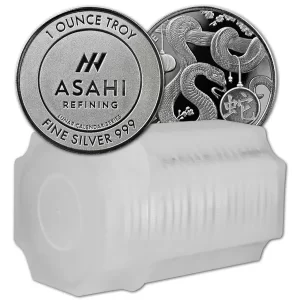The silver market is often a segmented business due to the different price levels and uses for silver. The price of silver has a long history of fluctuations, which makes investors cautious when dealing with them. According to the latest Silver Institute’s World Silver Survey report, silver supply is expected to be below demand this year and next as prices remain high.
Overview of the silver market
Silver is a precious metal that is used in several industrial, investment, and commercial applications. Some of the most common uses for silver include photography, medicine, jewellery, and coins. The silver market is comprised of both an industrial and investment sector. The industrial demand for silver is derived from its use in industrial applications like electronics, solar energy, and medicine. According to estimates, only 40% of silver is used for investment, with about 60% going to industrial uses. Nearly 80% of the 60% used for industrial purposes end up in landfills.
Supply and demand for silver is a zero-sum game.
Silver isn’t only valuable; it’s also extremely rare — there’s only enough in Earth’s crust to filling a grain elevator every five years.
The price of silver has been on a roller coaster ride over the past few years. It started 2015 at less than $16 per ounce, then skyrocketed to a peak of more than $50 per ounce before falling back down to around $25. Silver made progress in just six months, rising from $13 in March 2020 to $28 in September 2020, as of August 2020.
Why do we care about silver? Well, if you’re an investor looking for a way to diversify your portfolio or hedge against inflation, it’s hard not to notice that one metal usually associated with money is rising steadily higher than others.
Investment demand for silver is the fastest-growing sector of the market.
Silver investment demand is the fastest-growing sector of the silver market. Its annual growth rate has averaged more than 23 per cent over the past decade. Manufacturing of silver jewellery increased by 21% in 2021.
Investment demand for silver is driven by a growing need for precious metals as a hedge against inflation and deflation.
Production from primary silver mines has not been able to keep up with steadily growing industrial demand.
- By-product mining accounts for more than 70% of the supply of silver produced by mining. Increased demand for by-product metals like lead, zinc, and copper results in higher prices for those metals, which essentially supports silver mining. Recent quarters have seen a supply increase because of that impact.
- The Silver Institute forecasts a 3% increase in the world’s supply of silver this year due to higher mine production brought on by project ramp-ups as well as some output improvements at existing mines. This won’t be sufficient to meet the 5% predicted.
- The world’s silver reserves have already decreased because of these supply trends. Silver reserves increased by 122 million ounces (Moz) in 2021, but 270 Moz were removed during production.
Demand for tech applications like solar cells and 5G mobile networks and many more has enabled silver to outperform gold.
Silver is a key element in the production of solar cells and 5G mobile networks, but it has been outperforming gold for some time now by many metrics. When developed economies are moving toward weaker growth or even recession, demand for renewable energy and the electrification of vehicles may be more resilient.
- According to industry predictions, the demand for silver for electric vehicles is likely to one day exceed the amount of silver. Electric vehicles (EVs), whose demand is expanding rapidly worldwide, depend heavily on silver. By 2030, EV sales are expected to account for over 30% of all light-vehicle sales, primarily from China, Europe, and the United States. Compared to conventional ICE (internal combustion engine) vehicles, EVs will need a new set of manufacturing materials.
- Practically every electronic device contains silver. If it has an on/off switch, silver is probably inside. As global industrial production increased, demand for electronics and electrical products increased by 9% in 2021. The needs of the home working economy, strong consumer electronics demand, investments in 5G infrastructure, inventory building along the supply pipeline, and rising silver consumption in the green economy, particularly in photovoltaics, were additional supportive factors.
- Demand for metal has grown significantly over the past few years, especially when it comes to solar power systems. A good example is photovoltaic demand, which increased by 13% as a category in 2021 and helped push global silver demand to a new high. Photovoltaic demand is the demand for silver used as inputs in the production of solar panels.
- Implementations include packaging with an anti-microbial coating that extends shelf life and quality monitoring by gas sensors in the food industry.
- Every year, millions of water purifiers are sold, and many of them contain silver. For their filters to do their job of removing bacteria, chlorine, trihalomethanes, lead, particulates, and odour, silver prevents bacteria and algae from growing there. When combined with oxygen, silver works as a potent sanitiser that can replace or supplement other disinfectant systems.
Takeaway: The supply of silver will not be able to meet the demand for years to come, driving prices higher.
This means that those who have invested in silver have the potential to reap substantial rewards as the market for it continues to grow. It also means that the market for silver is likely to remain strong for the foreseeable future. This is great news for both investors and industry professionals as the current demand for silver is expected to remain high.
 Hi,
Hi,






















